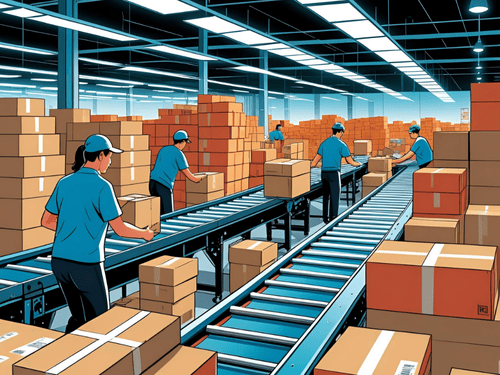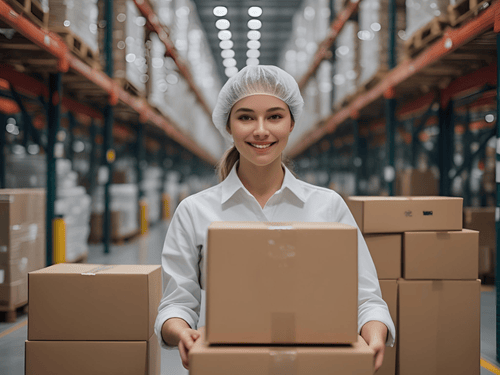Shipping fragile and high-risk products isn’t just a niche problem—it’s fast becoming a mainstream concern. With the growth of e-commerce and direct-to-consumer brands, more businesses now ship glassware, electronics, chemicals, or temperature-sensitive goods than ever before. Unfortunately, traditional fulfillment logistics often aren’t equipped to handle the care these items demand.
When fragile goods are damaged or hazardous materials are mishandled, it’s not just about losing a product. It’s your brand reputation, insurance coverage, and customer trust on the line. That’s why managing these specialty items with precision, compliance, and care is no longer optional—it’s critical.
What Makes These Products So Risky?
Fragile and high-risk products are vulnerable by design. Think of electronics, lab kits, or even perfume bottles. They’re easily broken, leaked, or ruined by a simple drop or a warm delivery van. Hazardous goods, like lithium batteries or cleaning agents, add another layer of complexity with strict packaging regulations and legal documentation required at every stage.
One bad shipment can result in contaminated stock, environmental hazards, or even fines. For e-commerce businesses that rely on fast, reliable service, the fallout can be costly in more ways than one.
Why Standard Fulfillment Logistics Aren’t Enough

A typical fulfillment center prioritizes speed and volume—but fragile and hazardous items need precision and protection. Traditional pick-pack-ship models can lead to vibration, overstacking, or poor storage conditions. Without tailored handling procedures, fragile goods can be crushed under pressure, and hazardous materials can be stored near incompatible products.
Fulfillment logistics that don’t adapt to these risks often face higher return rates, poor reviews, and even loss of regulatory compliance. That’s why many businesses are now rethinking how they package, store, and ship their high-risk inventory.
Smart Packaging Is Half the Battle
Packaging isn’t just a box—it’s your first layer of defense. For fragile items, this means using materials like air cushions, foam inserts, or even molded trays to reduce shock and vibration. Double-boxing, where a smaller box is protected within a larger one, significantly cuts down the risk of transit damage.
For hazardous materials, packaging must meet strict standards. This includes leak-proof containers, proper absorbents, and clearly labeled exterior markings. Eco-conscious brands are also shifting to biodegradable options that don’t compromise safety.
Safe Handling Requires Trained Hands

No amount of smart packaging will matter if items are mishandled by staff. That’s why consistent training is essential. Employees must know how to read hazard labels, move delicate inventory with padded carts, and follow protocols for spills or breakage.
Specialized equipment also plays a big role. Forklifts with rubber guards, temperature-monitored zones, and barrier-separated shelves reduce the chance of human error. In a high-stakes fulfillment logistics setting, these aren’t extras—they’re essentials.
Compliance Isn’t Optional
For many fragile and high-risk products, failing to follow regulations can mean heavy fines or shipment delays. Domestically, carriers follow DOT rules; internationally, it’s IATA for air and IMO for sea transport. Labels, documentation, and declarations must all be exact, and any slip-up could get your product held or denied transit altogether.
Working with fulfillment logistics partners who understand these rules ensures that every shipment moves legally, safely, and on time. It also means your business stays covered in the event of claims or audits.
Inventory Management for Delicate and Dangerous Stock
Real-time inventory systems are a must when it comes to fragile or hazardous stock. Whether you’re managing small-batch skincare or bulk industrial materials, proper tagging, frequent audits, and traceable movements can prevent both misplacement and misuse.
Designated storage areas, like climate-controlled rooms or high-security shelves, also reduce spoilage or contamination. This level of inventory control not only protects the products but helps businesses stay compliant with shipping and storage regulations.
Partnering with the Right Fulfillment Provider

Not all fulfillment logistics providers are equipped to handle specialty items. Look for partners with a proven track record in managing fragile goods or hazardous materials. White-glove services, climate control, and secure handling capacity are major indicators of a trustworthy team.
The best providers also stay proactive. They flag risky packaging, recommend better handling processes, and communicate clearly if something isn’t right. When your logistics partner acts like an extension of your brand, you’ll see fewer customer complaints and more repeat orders.
Getting Labeling and Carrier Choice Right
Proper handling starts with labeling. Fragile stickers, hazard symbols, and handling instructions need to be clearly visible. Some products also require orientation arrows or temperature alerts.
Choosing the right carrier matters too. Some specialize in high-risk shipments, offering services like signature confirmation or temperature-controlled transit. If your current carriers don’t offer these, it may be time to switch.
Raising the Bar in Specialty Fulfillment
Fragile and high-risk products are only going to become more common in fulfillment logistics. Businesses that prepare now—by upgrading packaging, retraining staff, and partnering with specialists—will avoid the chaos others face when something goes wrong.
This isn’t about avoiding risk completely—it’s about managing it smartly. Your customers expect their orders to arrive intact, no matter how complicated they are. And with the right logistics strategy, you can meet those expectations every time.
Ready to Strengthen Your Fulfillment Strategy?
If you’re shipping fragile and high-risk products, you can’t afford to take shortcuts. We help brands like yours create safer, smarter systems with proper packaging audits, safe handling training, and end-to-end fulfillment logistics designed for complex products.
Let’s talk about how to upgrade your process before your next shipment leaves the warehouse.

